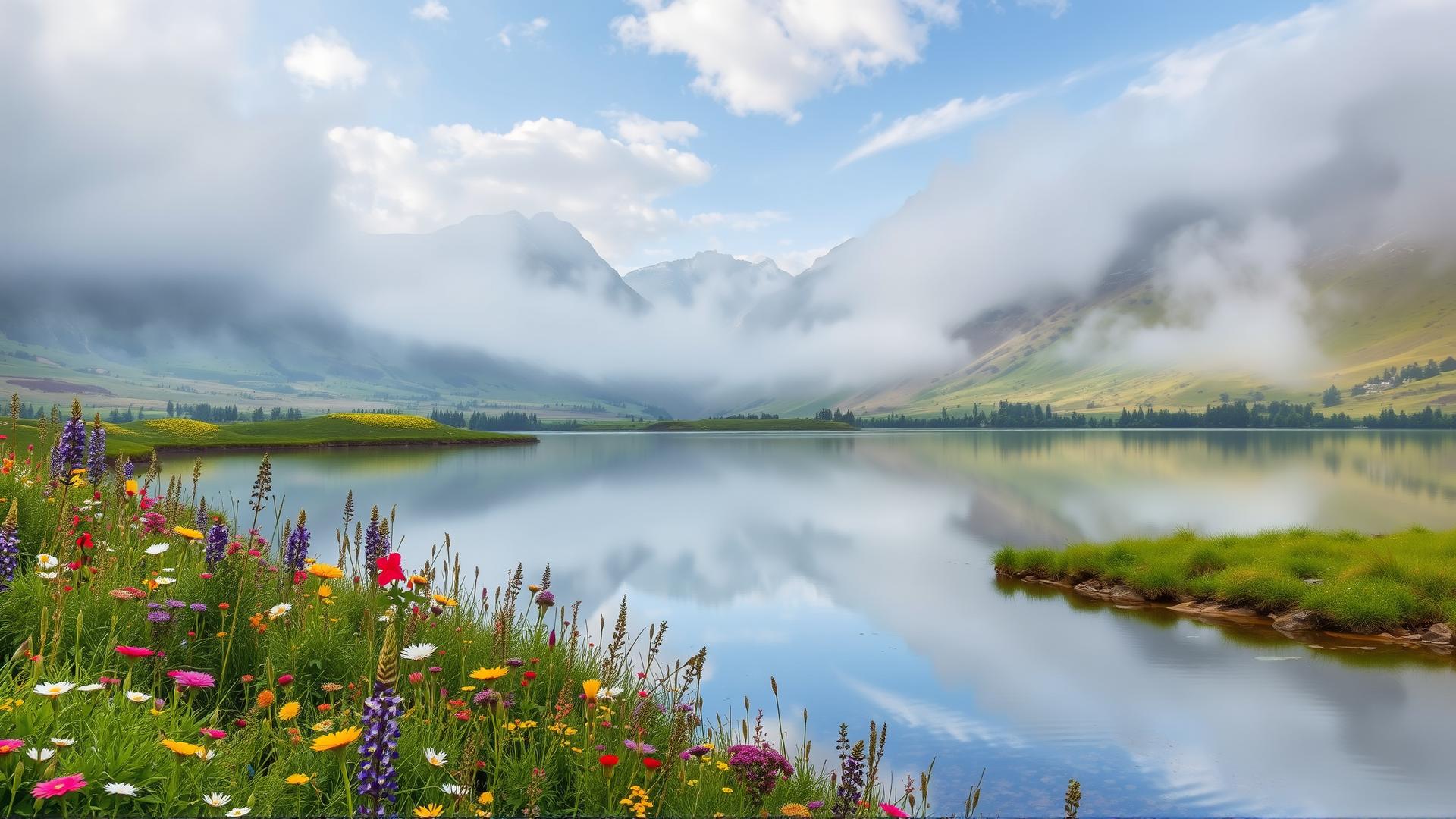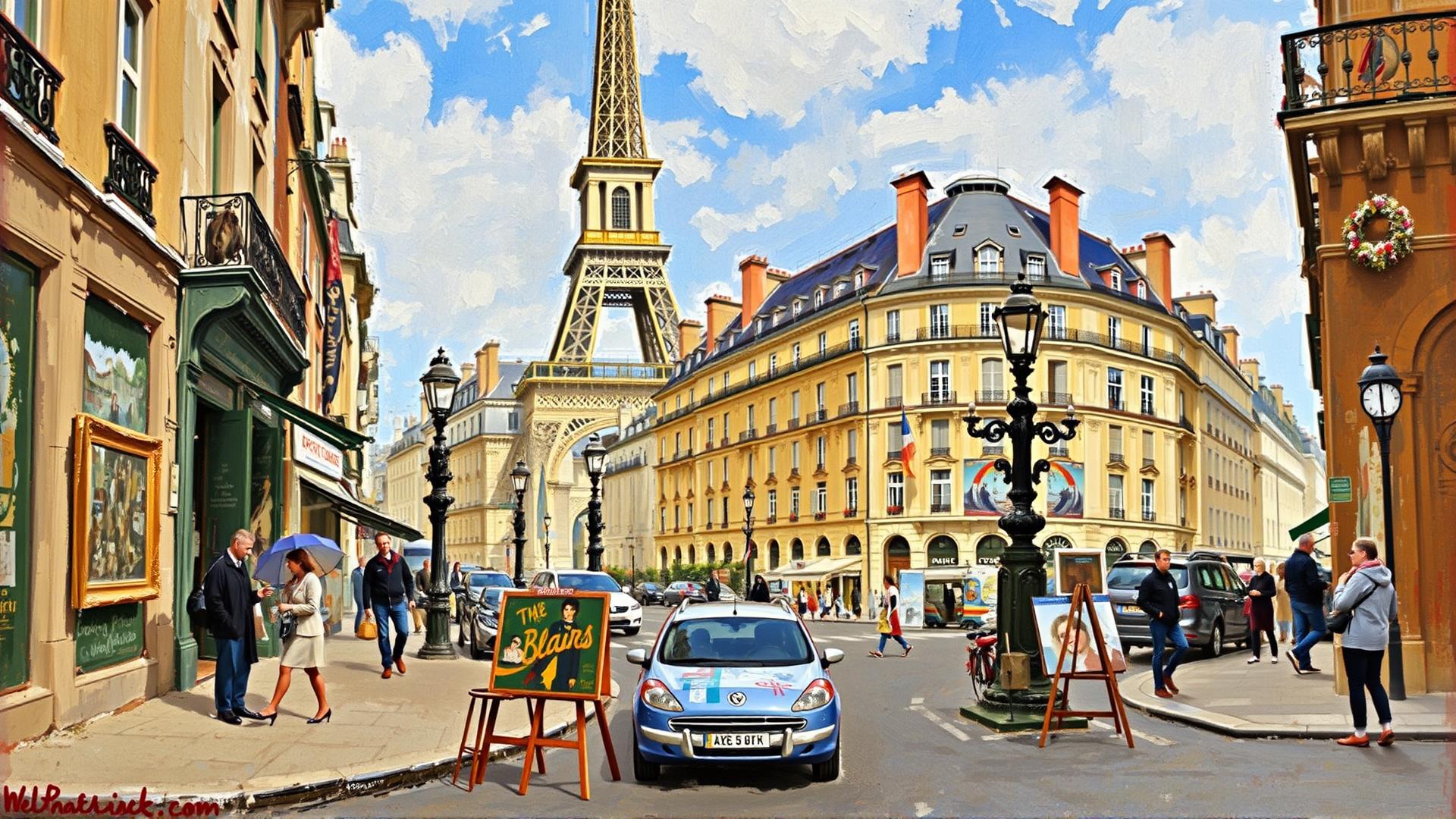
Capturing Nature With Timeless Impressionist Landscape Art
Introduction
Impressionist landscape art emerged as a revolutionary movement in the 19th century, offering a fresh perspective on the natural world. Characterized by visible brush strokes and an emphasis on the ephemeral qualities of light, this genre breaks free from traditional constraints. Artists like Claude Monet and Pierre-Auguste Renoir sought to reflect the immediacy and vibrancy of nature, capturing scenes that resonate with emotion rather than strict detail. This approach changed how landscapes were perceived and painted, shifting from static representations to dynamic portrayals.
The essence of Impressionism lies in its embrace of outdoor painting, or plein air, which enabled artists to document fleeting moments in nature. By prioritizing color and light over line and form, Impressionist landscapes showcase a unique interpretation of the natural world. In this article, we delve into the characteristics, techniques, and lasting impact of Impressionist landscape art, highlighting its relevance and influence on contemporary artistic practices.
The Birth of Impressionism
The origins of Impressionism can be traced back to the significant social and cultural transformations occurring in 19th century France. The era was marked by rapid industrialization, urbanization, and a burgeoning middle class, which collectively shifted societal values and artistic expressions. This changing landscape prompted artists to seek new ways to depict their surroundings and experiences, marking a noticeable departure from classical traditions that had dominated the art world for centuries.
Key figures such as Claude Monet, Pierre-Auguste Renoir, and Edgar Degas emerged, fundamentally challenging the established norms of academic art. The traditional approach, with its emphasis on historical or mythological themes and a meticulous focus on detail, was increasingly seen as inadequate in capturing the fleeting moments of modern life. Instead, Impressionist artists sought to convey a sense of immediacy and sensory experience through their work. This new emphasis on the effects of light and atmosphere led to a notable simplification of forms and a more spontaneous method of brushwork.
Monet’s painting “Impression, Sunrise” is often credited with giving the movement its name. The artwork’s loose brush strokes and focus on a single moment in time defied the precise rendering that characterized prior styles. Likewise, Renoir’s vibrant depictions of social scenes and Degas’s unique captures of movement and ballet dancers offered fresh perspectives of contemporary life that resonated with a public eager for change.
The Impressionists often painted en plein air, or outdoors, which allowed them to observe and capture the changing qualities of light and color directly from nature. This practice not only distinguished their work from the studio-bound methods of their predecessors but also introduced a dynamic interplay between the artists and the world around them. In doing so, they encouraged a personal, visceral engagement with the artwork, inviting viewers to experience the beauty and transience of everyday life.
As Impressionism gained momentum, it faced significant criticism from art critics and institutions, which viewed its embrace of the unrefined and spontaneous as a departure from artistic integrity. Despite this opposition, the movement gained popularity and laid the foundation for modern art, inspiring future generations of artists to prioritize emotional resonance and individual perspective over classical ideals. The legacy of the Impressionists remains profound, reminding us of the importance of capturing the essence of nature and the fleeting moments of life through art.
Techniques of Impressionist Landscapes
Distinctive Techniques in Impressionist Landscape Art
Impressionist landscape art is distinguished by its innovative techniques that diverged significantly from the rigid approaches of academic painting. One of the most notable elements is the unique brushwork employed by Impressionist artists. Rather than meticulously blending colors to achieve smooth transitions, artists like Claude Monet and Pierre-Auguste Renoir utilized loose, rapid strokes that added textural depth and vibrancy. This technique allowed them to capture fleeting moments in nature, conveying movement and light in a way that static brushwork could not.
The application of color in Impressionist landscapes further sets this style apart. Instead of adhering to the traditional color palette, Impressionists embraced the play of natural light, using pure, unmixed colors placed side by side. This chromatic approach fostered a lively interplay between hues, invoking the atmospheric effects of sunlight, shadow, and changing seasons. Artists focused on how colors affected one another when viewed from a distance, presenting a vivid experience of the scene intended to be captured.
The Plein Air Technique and Its Transformation of Landscape Painting
One of the defining practices of the Impressionist movement was plein air painting, which involved creating works outdoors in the presence of the natural landscape. This method allowed artists to observe their subjects firsthand and reproduce the immediacy of nature’s details. Previously, artists often relied on sketches or memories to complete their works in studios. However, by engaging directly with their environment, Impressionists experienced the nuances of light and atmosphere, producing pieces that were both spontaneous and authentic.
This shift toward outdoor painting represented a revolutionary departure from prior artistic norms, placing emphasis on personal experience and observation over idealization. Consequently, Impressionist landscapes emerged infused with an emotional resonance that captured not just the visual likeness of the world, but also its ephemeral qualities. Some of the most beloved Impressionist landscapes showcase idyllic scenes brimming with life, such as fields of wildflowers, bustling rivers, and serene lakes, reflecting the artists’ desire to connect with and celebrate the natural beauty of the world.
Themes in Impressionist Landscapes
The Exploration of Nature
Impressionist landscape art achieved a remarkable connection between the artist and the natural world, emphasizing the beauty of the outdoors in a refreshing and innovative manner. Artists like Claude Monet and Camille Pissarro focused their attention on depicting fleeting moments in nature, capturing not only the scenery but its reaction to light and atmospheric conditions. This exploration often transcended mere representation; it was an invitation for viewers to connect with nature on a more profound level. Impressionists sought to encapsulate the living essence of landscapes rather than rendering them with academic precision, leading audiences to appreciate the vibrancy of the environment surrounding them.
One hallmark of Impressionist landscapes is the elevation of ordinary scenes—fields, rivers, and gardens—into subjects worthy of high art. This movement marked a shift away from grand historical narratives or religious themes, allowing the simplicity of nature to resonate deeply with viewers. Each brushstroke carried an emotive quality, conveying the artist’s personal experience and interpretation of their surroundings.
The Passage of Time
Another prevalent theme in Impressionist landscape art is the passage of time. Many Impressionist compositions reflect a specific time of day or seasonal change, creating temporal anchors that speak to the transitory nature of life itself. Artists vividly portrayed the movement of shadows, the fluctuations of light, and the changing colors of foliage throughout the seasons. These moments serve as a reminder of the impermanence inherent in both nature and human experience.
For instance, Monet’s series of paintings depicting haystacks under different lighting conditions powerfully illustrates how time shapes perception. Each work presents a different moment, inviting the observer to witness the subtle shifts that define our world. This exploration of time imbues the landscapes with a sense of nostalgia—a longing for moments that slip away, urging viewers to cherish the ephemeral beauty of life.
Impressionist landscapes resonate not only visually but emotionally as well. By inviting viewers into their intimate encounters with nature, Impressionist artists created a dialogue that transcends time and continues to inspire deep feelings of wonder, serenity, and connection to the natural world.
Influence of Impressionism on Modern Art
Lasting Impact on Contemporary Artistic Practices
The Impressionist movement, flourishing in the late 19th century, significantly reshaped the landscape of modern art, ushering in a new era characterized by innovative approaches and diverse interpretations of nature. As artists such as Claude Monet, Pierre-Auguste Renoir, and Camille Pissarro painted en plein air, they captured the transient effects of light, shadow, and color. This focus on direct observation of the natural world resonated deeply, laying a foundational stone for future artistic movements including Expressionism, Abstract Expressionism, and even Post-Modernism.
Impressionism’s emphasis on unconventional techniques, such as broken brushstrokes and light manipulation, allowed subsequent artists to experiment with form and color in ways that transcended traditional representation. This liberating perspective encouraged artists like Wassily Kandinsky and Jackson Pollock to explore abstraction, moving beyond realistic depictions of nature to convey emotional and spiritual experiences through color and form. In this regard, Impressionist landscape art acted as a bridge that connected the past to an increasingly modern sensibility, challenging the conventions of how nature could be perceived and portrayed.
Emotional resonance found in Impressionist landscapes inspired modern and contemporary artists to delve into the subjective experience of nature. The instinctive response to natural beauty reflected in the works of Vincent van Gogh showed how feelings could intertwine with the physical landscape. Contemporary artists often turn to Impressionist themes but reinterpret them with a modern twist, such as in the works of artists like Gerhard Richter, who plays with blurring and layering, reminiscent of the Impressionist technique yet pointing toward an abstract reality.
The exploration of time, as depicted by the Impressionists through changing natural light and seasonal shifts, resonates in the practice of minimalist and conceptual artists. The fleeting moments captured in Impressionist landscapes parallel a contemporary focus on ephemerality and transience in nature, further connecting the past with modern artistic concerns. In this way, the influences of Impressionism continue to echo throughout various art forms, encouraging constant reflection on the ever-evolving narrative of nature as a subject of artistic expression.
Famous Impressionist Landscape Paintings Masterpieces of Natures Beauty
Highlights of Renowned Works
The Impressionist movement birthed a selection of iconic landscape paintings that not only showcase the beauty of nature but also revolutionize the perception of art itself. Among these masterpieces, Claude Monet’s *Impression, Sunrise* (1872) stands as the titular work that fueled the movement’s name. In this painting, the loose brushwork and vibrant color palette evoke the ephemeral qualities of light at dawn, allowing viewers to perceive the atmosphere rather than focus on details. The balanced composition, where the sun emerges from the mist, provides a sense of tranquility, inviting the viewer into the scene’s serenity.
Another prominent example is Camille Pissarro’s *The Boulevard Montmartre, Spring* (1897). This painting depicts a busy Parisian street, complete with blossoming trees and bustling figures. Pissarro’s technique combines a variety of brush strokes to convey movement, as if capturing a single moment in time. The contrast between the soft petals and the vivid lively street captures the essence of urban nature, reflecting societal changes during this period. Historical significance stems from Pissarro’s ability to depict the harmony of nature within urban settings, highlighting the burgeoning relationship between city life and the countryside.
Technique and Composition Analysis
Monet and Pissarro exemplify the hallmark techniques of Impressionism—visible brushwork, lack of detail, and a focus on light to convey emotion. In Monet’s approach, colors are blended directly on the canvas, allowing for a dynamic interaction of hues that shift with the viewer’s perspective. This method captured the transient effects of light beautifully, epitomizing the Impressionist ethos of seeing nature as ever-changing.
Pissarro, on the other hand, often employed pointillism to depict his landscapes. By placing distinct dots of color next to one another, he created flickering textures that suggest movement and vibrancy. This technique not only adds life to his subjects but also represents the Impressionist struggle to encapsulate the fleeting moments of everyday existence.
Each of these paintings carries a legacy that reverberates through the art world, marking crucial developments in the way landscapes can be interpreted and appreciated. They serve as reminders of the delicate balance between human life and nature, prompting future generations to reflect on their own interactions with the environment, while simultaneously enriching the discourse surrounding art’s role in society.
The Legacy of Impressionist Landscape Art
Understanding Importance and Contemporary Relevance
Impressionist landscape art remains a profound influence within the sphere of contemporary art, resonating with modern audiences and artists alike. By breaking free from traditional realism, Impressionist painters, such as Monet and Cézanne, embraced a more subjective interpretation of nature, paving the way for the expressive styles that followed. Their focus on light, color, and atmospheric effects encourages viewers to engage with landscapes on an emotional level, fostering a deeper appreciation for the natural world.
The reverberations of Impressionism can be seen vividly in contemporary art movements that emphasize the relationship between humanity and the environment. Artists today often draw inspiration from the earnestness of Impressionist techniques, employing similar brushwork and color palettes to express their environmental concerns. This connection highlights how the Impressionists’ legacy transcends mere aesthetic appreciation and expands into discussions about ecological issues. By capturing nature in all its transient beauty, these artists provoke reflection on the impermanence of landscapes amidst the changing climate.
The role of Impressionist landscape art in today’s environmental discourse cannot be overstated. As global awareness around climate change intensifies, the importance of depicting natural environments vividly underscores the fragility of ecosystems. Art has the power to stir emotions, and Impressionist landscapes are especially effective at showcasing the awe-inspiring beauty of nature. In doing so, they underline our collective responsibility to protect and preserve these vital spaces. Artworks that hark back to this movement serve as reminders of what is at stake, evoking a sense of urgency while inspiring conservation efforts.
The experience of viewing Impressionist landscapes facilitates an aesthetic appreciation that motivates individuals to immerse themselves in nature. In a fast-paced modern society often disconnected from the natural world, these pieces encourage contemplative engagement and foster a desire to reconnect with our surroundings. Art becomes a medium through which the public can explore and reflect on both the beauty and the vulnerabilities of the environment.
To encapsulate, the legacy of Impressionist landscape art speaks not only to artistic innovation but also to a timeless means of understanding and valuing the world around us. Its enduring relevance in contemporary conversations about environmental awareness reaffirms the artist’s role as a powerful advocate for the beauty of nature and the necessity of its preservation.
Conclusions
The exploration of Impressionist landscape art reveals a significant shift in artistic expression that celebrates the beauty of nature through innovative techniques. By focusing on light, movement, and color, Impressionist artists created immersive experiences that engage the viewer’s senses, inviting them to appreciate the vibrancy of the world around them. This unique approach not only transformed landscape painting but also laid the groundwork for various modern artistic movements that followed.
Impressionist landscapes continue to inspire and influence artists today. Their ability to evoke emotion and capture the essence of fleeting moments fosters a deeper connection to nature. By examining the history and techniques of this enduring style, we can gain a greater appreciation for both the art form itself and the natural world that it seeks to represent.


















